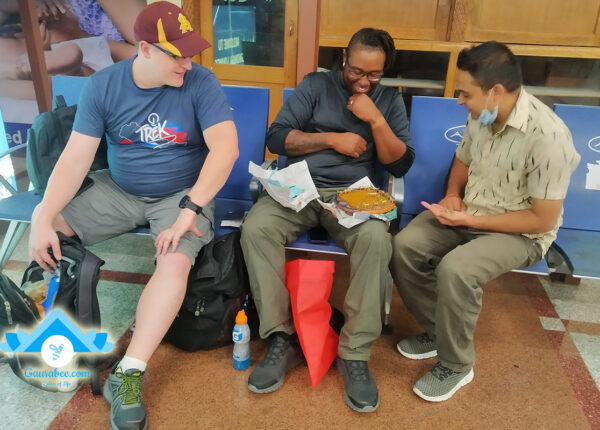
“What’s the secret behind this ‘lean and fit’ body?” — that’s the question I often get from people who have always known me as a bit ‘fat and healthy’ guy. Over the last three years, I lost more than 12 kilograms of weight. I would smile and respond, “Meditation, yoga, and a vegetarian diet.” That was my polite lie — an easier answer than revealing the silent battle I was fighting inside.
In truth, I had been struggling for years with difficulty swallowing food and even water. Since childhood, I always needed two or three glasses of water to finish a meal. Not because I was thirsty, but because my food pipe felt narrow — as though every bite got trapped midway. Water was my rescuer, pushing the food down. But about three years ago, even that stopped working. The water that used to help began to get stuck too. When it refused to go down, I had to vomit voluntarily just to create a temporary passage for food. It would take me more than half an hour to finish a single meal.
I visited doctors of every kind — from Ayurvedic to allopathic, from government hospitals to expensive private clinics. I went through endoscopies, barium swallow tests, and countless blood reports. Each doctor gave the same diagnosis that almost every Nepali seems to get at some point: gastritis. I strictly followed their diets and medicines, but the difficulty persisted. I even visited a shaman, just in case some unseen force was clutching my throat. Nothing changed — except that my body grew weaker and thinner each day.
My mother grew deeply worried. While I was away from home, she secretly planned to take me to Delhi for treatment. When I learned of her plan, I became determined to find the answer here in Nepal itself. I began researching on my own — this time turning to AI and medical websites for guidance. The search pointed toward a rare condition called Achalasia Cardia, which could be confirmed through a “High-Resolution Esophageal Manometry (HRM)” test. I reached out to my relatives’ circle to check if this test was available in Nepal. Luckily, dear sister shared a doctor’s contact who could perform it. Before my mother could finalize her Delhi plan, I booked my appointment with the doctor.
When I met the doctor and showed him my previous reports, he immediately suspected the same condition. The next morning, I underwent the HRM test. The doctor inserted a thin tube through my nose and asked me to gulp water from a needleless syringe. Within moments, the diagnosis was confirmed: Achalasia Cardia — a rare swallowing disorder affecting only about 8 to 12 people per 100,000.
Curious, I asked, “Is it because I turned vegetarian?” He smiled and replied, “No, this isn’t something you developed recently. You were born with it. It only became severe in recent years.” Suddenly, everything made sense — all those years of struggling with water and food.
The doctor then opened YouTube on his desktop and showed me an animation of a minimally invasive surgery called Peroral Endoscopic Myotomy (POEM). “This can permanently fix your problem,” he said confidently. Without much hesitation, I booked my surgery date. Honestly, I was more concerned about easing my mother’s worries than my own pain.
The day before surgery, I was admitted to the hospital for pre-operative checks. The next morning, a nurse arrived with a wheelchair to take me to the operating room. I told her I could walk just fine, but she insisted — protocol, she said. I gave in. Inside the operating room, the anesthetist smiled and said, “People come here to sleep.” He inserted a cannula in my right arm and injected the anesthesia. One… two… three… I was gone.
When I woke up three hours later, a nurse was at my bedside. “How are you, dai?” she asked gently. Still half-dazed, I counter-questioned, “Was the surgery successful?” The anesthetist, still nearby, joked, “We wouldn’t know that! Our job is to keep you asleep — you’ll have to ask your doctor.”
Few minutes later, I had a visitor in my recovery room. It was none other than my mom. She asked me, “How are you, babu?”. Summoning the extra does of strength I had, I smiled and said, “I’m totally fine, mommy.”
That evening, I was moved to the Post-Op ward and then to the general ward the next morning. After 48 hours, I was allowed a thin daal soup. It was more like seasoned water than soup, but to me, it tasted divine. The first spoonful went down smoothly — no obstruction, no struggle, no water rescue. It felt unreal. I kept taking spoonful until impatience took over. I left the spoon and started galloping directly from the bowl. It wasn’t the taste that moved me; it was the freedom of swallowing — something I hadn’t felt in years.
The doctor didn’t have to tell me the surgery was successful. I could feel it. The next day, a Gastrografin swallow test confirmed what my body already knew. I was cleared to go home — free, healed, and indescribably grateful.
In the past three years, eating had become a daily battle for me. Now, I could enjoy food again — normally, peacefully. This was like getting a new life. Resting on this newfound life, I often find myself contemplating how delicate this human body truly is. And we take it for granted — feeding it with junk, drowning it in alcohol, or suffocating it with smoke — forgetting that it is a divine instrument, not a disposable shell.
We breathe in and out without effort, without thought. This rhythm of life continues silently until one day, it doesn’t. Only when an oxygen cylinder is strapped beside us do we realize what a miracle a single breath truly is. My surgery didn’t just heal my food pipe — it awakened something deeper in me: gratitude.
I now see life differently. Every breath, every meal, every sunrise feels sacred. Pain, too, had its purpose — it slowed me down, made me listen to my body, and reconnect with my soul. Perhaps, this was not just a surgery; it was grace in disguise.
Hare Krishna!






